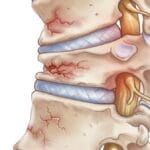Tennis elbow, medically known as lateral epicondylitis, is a painful condition caused by overuse of the forearm muscles and tendons around the elbow joint. It often affects tennis players but can occur in anyone who performs repetitive arm and wrist activities. Preventing tennis elbow involves proper technique, equipment, exercises, and general care strategies. Here’s an extensive guide on how to prevent tennis elbow, including tips, exercises, and frequently asked questions.
Understanding Tennis Elbow
Tennis elbow occurs due to repetitive stress and overuse, leading to tiny tears and inflammation in the tendons that attach to the lateral epicondyle of the elbow. Common symptoms include pain and tenderness on the outside of the elbow, weak grip strength, and discomfort when lifting or bending the arm.
Tips to Prevent Tennis Elbow
- Use Proper Technique and Equipment: Proper technique is crucial in sports and activities involving repetitive arm movements. Ensure you’re using the correct grip size for your racket and maintaining proper form during activities to reduce strain on your tendons
- Gradual Progression: Gradually increase the intensity and duration of your activities. Avoid sudden increases in workload which can stress the tendons and muscles of your forearm.
- Take Breaks and Avoid Overuse: Regular breaks during activities can help prevent muscle fatigue. For those involved in repetitive tasks, ensure to take frequent breaks to stretch and relax your muscles.
- Warm Up and Stretch: Always warm up before engaging in physical activities. Stretching the muscles of the forearm, wrist, and fingers can improve flexibility and blood flow, reducing the risk of injury .
- Strengthening Exercises: Incorporate exercises that strengthen the forearm and wrist muscles. Strengthened muscles can better handle stress and prevent tendon overuse injuries.
Exercises to Prevent Tennis Elbow
Wrist Curls:
- Position: Sit with your forearm resting on a table, palm up.
- Movement: Hold a light weight and curl your wrist upwards, then slowly lower it back down.
- Repetitions: Perform three sets of 10-15 repetitions.
Reverse Wrist Curls:
- Position: Similar to wrist curls but with the palm facing down.
- Movement: Curl the wrist upwards and lower it back slowly.
- Repetitions: Perform three sets of 10-15 repetitions.
Tennis Ball Squeeze:
- Position: Hold a tennis ball in your hand.
- Movement: Squeeze the ball tightly for a few seconds, then release.
- Repetitions: Repeat for three sets of 10 squeezes.
Wrist Extensor Stretch:
- Position: Extend your arm in front of you, palm down.
- Movement: Use your other hand to gently pull the fingers back towards the wrist until a stretch is felt.
- Duration: Hold for 15-30 seconds, then release. Repeat three times.
Wrist Flexor Stretch:
- Position: Extend your arm in front of you, palm up.
- Movement: Gently pull the fingers back with the other hand until a stretch is felt in the forearm.
- Duration: Hold for 15-30 seconds, then release. Repeat three times
FAQs
Q: Can tennis elbow occur in non-athletes? A: Yes, tennis elbow can affect anyone who performs repetitive movements of the arm and wrist, such as typing, gardening, or painting.
Q: How long does it take to recover from tennis elbow? A: Recovery can vary depending on the severity of the condition and adherence to treatment. It can take weeks to months for full recovery.
Q: Are there any other treatments for tennis elbow? A: Yes, treatments include rest, ice application, physical therapy, anti-inflammatory medications, and in severe cases, medical procedures like platelet-rich plasma (PRP) therapy or ultrasonic tenotomy .
Q: When should I see a doctor for tennis elbow? A: If you experience persistent pain and swelling despite self-care measures, it’s important to consult a healthcare professional for proper diagnosis and treatment.
By following these tips and incorporating preventive exercises into your routine, you can reduce the risk of developing tennis elbow and maintain healthy forearm and elbow function. If you experience any symptoms of tennis elbow, seek medical attention to avoid worsening the condition and to receive appropriate care.





